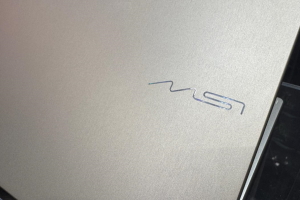Intel Pentium 4 3,2 Ghz

Ultimo processore basato su Core Northwood a 0.13 micron, il Pentium 4 3,2 Ghz stabilisce nuovi livelli prestazionali di riferimento nell'attesa che AMD rilasci ufficialmente le cpu Athlon 64
di Paolo Corsini pubblicato il 23 Giugno 2003 nel canale ProcessoriIntelAMD
I processori in commercio
La tabella sottostante riporta tutte le versioni di processore Intel Pentium 4 basate su Socket 478:
Cpu |
Bus | Moltip. | Core | Micron | Cache L2 | Supporto HT |
| Pentium 4 1,3 Ghz | 400 Mhz | 13x | Willamette | 0.18 |
256 Kbytes | no |
| Pentium 4 1,4 Ghz | 400 Mhz | 14x | Willamette | 0.18 | 256 Kbytes | no |
| Pentium 4 1,5 Ghz | 400 Mhz | 15x | Willamette | 0.18 | 256 Kbytes | no |
| Pentium 4 1,6 Ghz | 400 Mhz | 16x | Willamette | 0.18 | 256 Kbytes | no |
| Pentium 4 1,6 Ghz | 400 Mhz | 16x | Northwood | 0.13 | 512 Kbytes | no |
| Pentium 4 1,7 Ghz | 400 Mhz | 17x | Willamette | 0.18 | 256 Kbytes | no |
| Pentium 4 1,8 Ghz | 400 Mhz | 18x | Willamette | 0.18 | 256 Kbytes | no |
| Pentium 4 1,8 Ghz | 400 Mhz | 18x | Northwood | 0.13 | 512 Kbytes | no |
| Pentium 4 1,9 Ghz | 400 Mhz | 19x | Willamette | 0.18 | 256 Kbytes | no |
| Pentium 4 2,0 Ghz | 400 Mhz | 20x | Willamette | 0.18 | 256 Kbytes | no |
| Pentium 4 2,0A Ghz | 400 Mhz | 20x | Northwood | 0.13 | 512 Kbytes | no |
| Pentium 4 2,2 Ghz | 400 Mhz | 22x | Northwood | 0.13 | 512 Kbytes | no |
| Pentium 4 2,266 Ghz | 533 Mhz | 17x | Northwood | 0.13 | 512 Kbytes | no |
| Pentium 4 2,4 Ghz | 400 Mhz | 24x | Northwood | 0.13 | 512 Kbytes | no |
| Pentium 4 2,4 Ghz | 533 Mhz | 18x | Northwood | 0.13 | 512 Kbytes | no |
| Pentium 4 2,4 Ghz | 800 Mhz | 12x | Northwood | 0.13 | 512 Kbytes | si |
| Pentium 4 2,533 Ghz | 533 Mhz | 19x | Northwood | 0.13 | 512 Kbytes | no |
| Pentium 4 2,500 Ghz | 400 Mhz | 25x | Northwood | 0.13 | 512 Kbytes | no |
| Pentium 4 2,6 Ghz | 800 Mhz | 13x | Northwood | 0.13 | 512 Kbytes | si |
| Pentium 4 2,667 Ghz | 533 Mhz | 20x | Northwood | 0.13 | 512 Kbytes | no |
| Pentium 4 2,8 Ghz | 533 Mhz | 21x | Northwood | 0.13 | 512 Kbytes | no |
| Pentium 4 2,8 Ghz | 800 Mhz | 14x | Northwood | 0.13 | 512 Kbytes | si |
| Pentium 4 3 Ghz | 800 Mhz | 15x | Northwood | 0.13 | 512 Kbytes | si |
| Pentium 4 3,06 Ghz | 533 Mhz | 23x | Northwood | 0.13 | 512 Kbytes | si |
| Pentium 4 3,2 Ghz | 800 Mhz | 16x | Northwood | 0.13 | 512 Kbytes | si |
La tabella seguente riporta le caratteristiche tecniche principali di tutte le versioni di processore AMD Athlon XP commercializzate a partire dal mese di Ottobre 2001:
| Cpu | Clock effettivo | Moltiplicatore | Frequenza di bus | Core | Processo produttivo |
| Athlon XP 1500+ | 1333 Mhz | 10x | 266 Mhz | Palomino | 0.18 micron |
| Athlon XP 1600+ | 1400 Mhz | 10.5x | 266 Mhz | Palomino | 0.18 micron |
| Athlon XP 1700+ | 1467 Mhz | 11x | 266 Mhz | Palomino | 0.18 micron |
| Athlon XP 1800+ | 1533 Mhz | 11.5x | 266 Mhz | Palomino | 0.18 micron |
| Athlon XP 1900+ | 1600 Mhz | 12x | 266 Mhz | Palomino | 0.18 micron |
| Athlon XP 2000+ | 1667 Mhz | 12.5x | 266 Mhz | Palomino | 0.18 micron |
| Athlon XP 2100+ | 1733 Mhz | 13x | 266 Mhz | Palomino | 0.18 micron |
Athlon XP 2200+ |
1800 Mhz | 13.5x | 266 Mhz | Thoroughbred | 0.13 micron |
Athlon XP 2400+ |
2000 Mhz | 15x | 266 Mhz | Thoroughbred-B | 0.13 micron |
| Athlon XP 2500+ | 1.833 Mhz | 11x | 333 Mhz | Barton | 0.13 micron |
Athlon XP 2600+ |
2133 Mhz | 16x | 266 Mhz | Thoroughbred-B | 0.13 micron |
Athlon XP 2600+ |
2.083 Mhz | 12,5x | 333 Mhz | Thoroughbred-B | 0.13 micron |
| Athlon XP 2700+ | 2166 Mhz | 13x | 333 Mhz | Thoroughbred-B | 0.13 micron |
| Athlon XP 2800+ | 2.250 Mhz | 13,5x | 333 Mhz | Thoroughbred-B | 0.13 micron |
| Athlon XP 2800+ | 2.083 Mhz | 12,5x | 333 Mhz | Barton | 0.13 micron |
| Athlon XP 3000+ | 2.167 Mhz | 13x | 333 Mhz | Barton | 0.13 micron |
| Athlon XP 3000+ | 2.100 Mhz | 10.5x | 400 Mhz | Barton | 0.13 micron |
| Athlon XP 3200+ | 2.200 Mhz | 11x | 400 Mhz | Barton | 0.13 micron |
Il Core Palomino è stato il primo ad essere stato introdotto da AMD sul mercato, con processo produttivo a 0.18 micron e versioni sino al modello 2.100+. Il Core Thoroughbred è stato il primo con processo produttivo a 0.13 micron introdotto da AMD, con il modello 2.200+; in seguito è stato sostituito dalla revision Thoroughbred-B, utilizzata sino al processore Athlon XP 2.800+. Da ultimo, infine, il Core Barton con processo produttivo a 0.13 micron e cache L2 accresciuta sino a 512 Kbytes. I processori basati su Core Barton attualmente in commercio sono i modeli 2.500+, 2.800+, 3.000+ e 3.200+.







 Recensione Sony Xperia 1 VII: lo smartphone per gli appassionati di fotografia
Recensione Sony Xperia 1 VII: lo smartphone per gli appassionati di fotografia Attenti a Poco F7: può essere il best buy del 2025. Recensione
Attenti a Poco F7: può essere il best buy del 2025. Recensione Recensione Samsung Galaxy Z Fold7: un grande salto generazionale
Recensione Samsung Galaxy Z Fold7: un grande salto generazionale  L'amministrazione Trump vorrebbe distruggere un satellite per la rilevazione delle emissioni di anidride carbonica e non solo
L'amministrazione Trump vorrebbe distruggere un satellite per la rilevazione delle emissioni di anidride carbonica e non solo La NASA vorrebbe realizzare un reattore nucleare sulla Luna per le future missioni con equipaggio
La NASA vorrebbe realizzare un reattore nucleare sulla Luna per le future missioni con equipaggio Oltre 1.700 km con una ricarica: l'assurdo record di autonomia del Chevrolet Silverado
Oltre 1.700 km con una ricarica: l'assurdo record di autonomia del Chevrolet Silverado Maxi annuncio dalla Casa Bianca: Apple potrebbe investire 100 miliardi di dollari aggiuntivi negli USA
Maxi annuncio dalla Casa Bianca: Apple potrebbe investire 100 miliardi di dollari aggiuntivi negli USA Microonde con grill, super venduto e apprezzato, a 55€? Senza dubbio il modello Cecotec, pratico e senza fronzoli inutili
Microonde con grill, super venduto e apprezzato, a 55€? Senza dubbio il modello Cecotec, pratico e senza fronzoli inutili Pubblicazioni scientifiche false in aumento vertiginoso: il fenomeno dei paper mill minaccia la credibilità accademica
Pubblicazioni scientifiche false in aumento vertiginoso: il fenomeno dei paper mill minaccia la credibilità accademica Ecco le 100 startup che prenderanno parte a DigithON 2025
Ecco le 100 startup che prenderanno parte a DigithON 2025 Pandora colpita da un attacco informatico: rubati nomi ed email, ma non password e carte di credito
Pandora colpita da un attacco informatico: rubati nomi ed email, ma non password e carte di credito Cooler Master MasterFrame 360 Panorama S Limited Edition: solo 100 pezzi al mondo
Cooler Master MasterFrame 360 Panorama S Limited Edition: solo 100 pezzi al mondo Motorola e Swarovski lanciano The Brilliant Collection con cristalli Swarovski
Motorola e Swarovski lanciano The Brilliant Collection con cristalli Swarovski Wikipedia dichiara guerra all'IA spregiudicata: cancellazione rapida per gli articoli non revisionati
Wikipedia dichiara guerra all'IA spregiudicata: cancellazione rapida per gli articoli non revisionati Dai social ai farmaci dimagranti: il nuovo incarico della ex CEO di X (Twitter)
Dai social ai farmaci dimagranti: il nuovo incarico della ex CEO di X (Twitter) Addio spam su WhatsApp? Ecco le nuove difese contro l'aggiunta indesiderata nei gruppi
Addio spam su WhatsApp? Ecco le nuove difese contro l'aggiunta indesiderata nei gruppi Su Windows 11 25H2 cambierà (in peggio?) la gestione dei collegamenti sul desktop
Su Windows 11 25H2 cambierà (in peggio?) la gestione dei collegamenti sul desktop



















